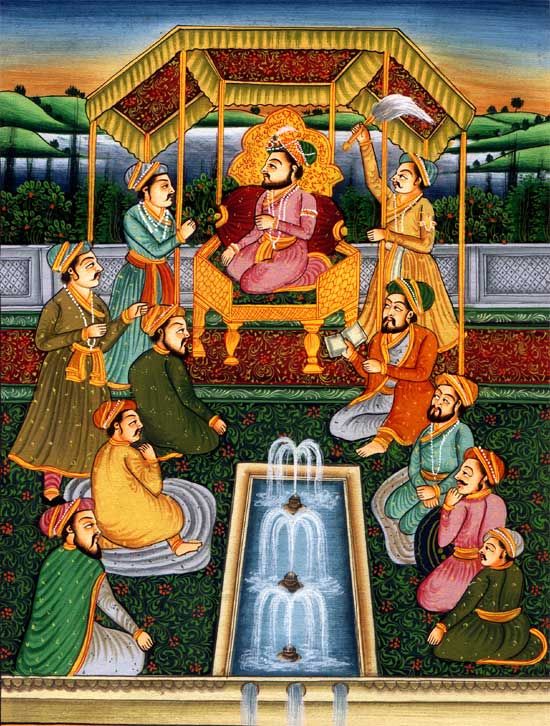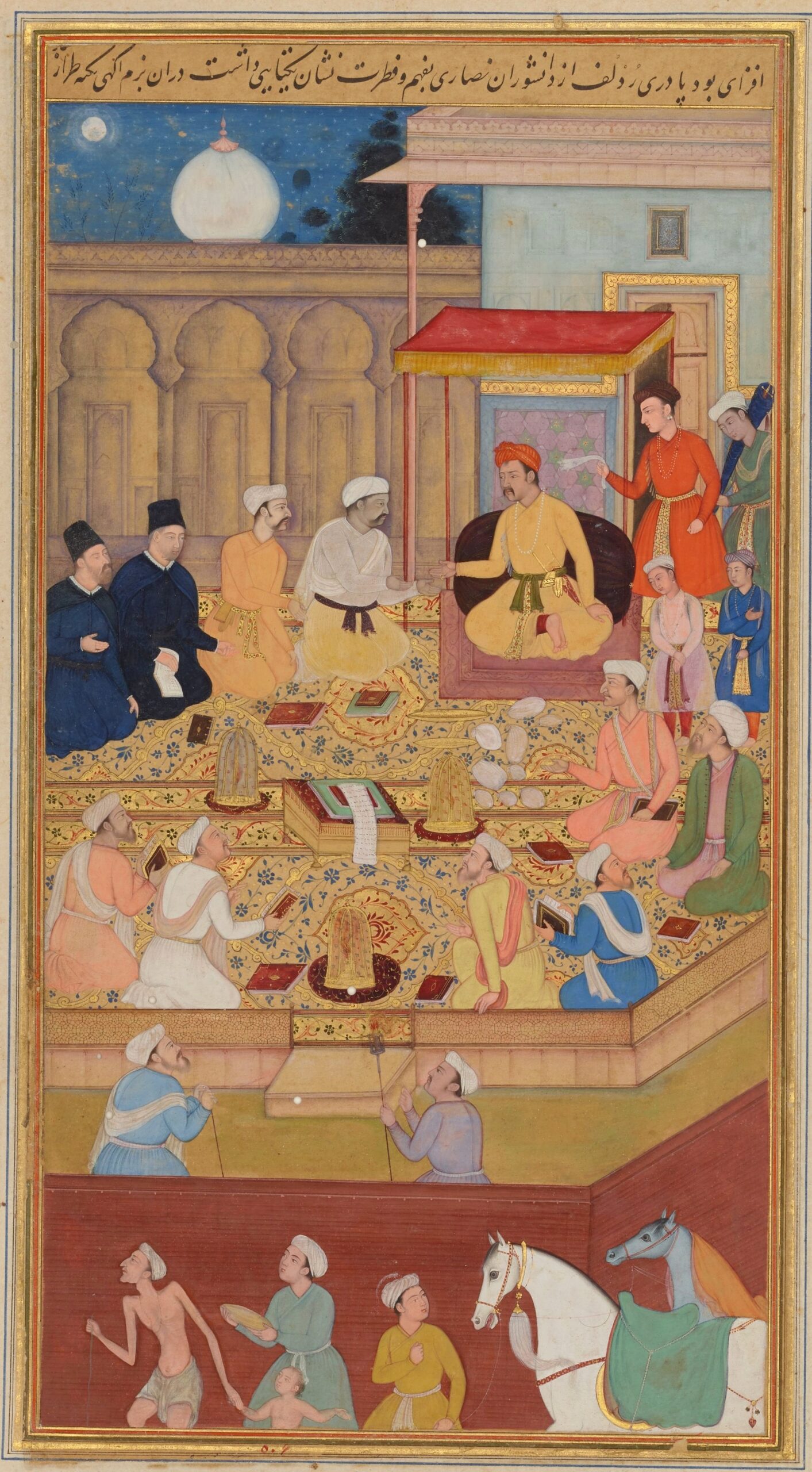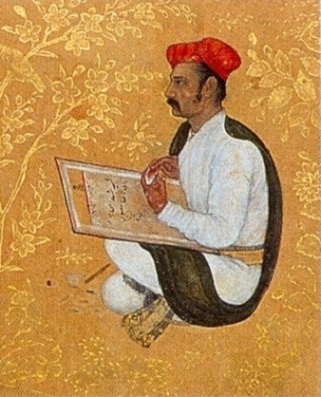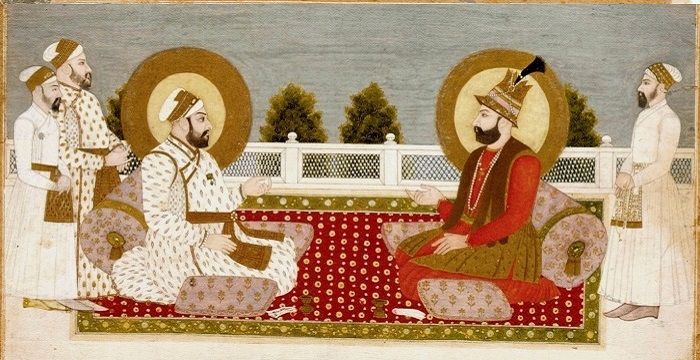Mughal Paintings were remarkable pieces of art and a great source of understanding of their history. The art of painting witnessed remarkable progress during the Mughal period. Because liberal & progressive Mughal rulers patronized painters in their court. Beginning from the reign of Babur, painters were patronized by Mughal rulers. Babar in his autobiography mentioned that painters were employed in making images for his book.


Significance progress in the field of painting commenced during the reign of Humayun. While returning from Persia. Humayun brought 2 famous painters with him – Khawja Abdul Samad & his son Mir Sayyad Ali. Mir Sayyad Ali was appointed as Akbar’s teacher. Paintings were mainly in form of book illustrations (Narrative painting in which stories of books were presented). Akbar patronized a large number of painters in his court. He established a department of painting known as “Tasvir Khana”.

Painters were appointed in state services to support them. The most remarkable progress in the field of paintings took place during the reign of Jahangir. He himself was a fine painter. He could find out which part of the painting was made by whom by composite work. Mansoor was the greatest painter of birds, animals & natural beauty.
Bisandas was the greatest portrait painter. He was even sent to Persia to make a portrait of the Persian ruler. He received a gift as an elephant from Persia. The art of painting continued to flourish during the reign of Shah Jahan. Portraits of members of the Royal family were made during his reign. The golden color was used on large scale. These costly paintings reflect a high level of prosperity.

Aurangzeb prohibited the art of paintings. He considered painting was against the tenets of Islam. The royal painter was banished & painting located on the walls of Akbar’s palace (Arya) & his tomb Sikandara was ordered to be whitewashed. Aurangzeb also destroyed the paintings of Bijapur & Golkonda. The 2 Southern states annexed by him. The Mughal painters expelled from the court moved into Rajasthan & Hilly area. As a result of which Rajasthani/Rajput style painting & Pahadi school of painting emerged.
Characteristic Features of Mughal Paintings
Mughal paintings were an example of court art because the painter lived under the patronage of the king. The themes of Mughal painting revolved around court life primarily. Court scene, palace scene, hunting scene, war scenes & natural beauty were painted.
Some of the painting of this age also portrays the life of common people in villages. The huts, bullock carts, women pulling water from well & farmers busy in their agriculture activity were also portrayed. The Mughal paintings reflected assimilation of Persian, Indian & European elements. Persian influence was visible in the form of 2 dimensional (flat) painting & narrative paintings. Indian influence was visible in the form of portrait painting. 8D paintings & use of peacock blue & red color.
The European, influence was visible in form of Halo, light & shadow effect, the depiction of roaring cloud & greater progress in the field of miniature paintings. Oil painting was absent during the Mughal period. The Rose flower enjoys place central significance in Mughal paintings just like the lotus flower enjoys central significance in Ajanta paintings.
Modern Age – Modern Indian Painting
Modern Indian painting emerged in the 18th century & flourished during the 18th to 19th century. Its emergence was the outcome of the establishment of British rule in India because the established British attracted a number of European painter to India & they brought European technology with them. The company style & the nationalist school were the two main branches in Modern Indian painting. The use of an Easel/tripod/stand & oil painting were the two most essential features that different modern paintings from Mughal/Medieval age painting.
British Indian Paintings
This school is also known as company style (East India Company was the ruling authority), Patna style (Patna was an important center) & Bazaar style (Kasim Bazaar was another important center. This school emerged as a result of the arrival of a number of European painters to India. Such as William Daniel Reynolds, Emily Eden, George Chinnery. They came to India because the court of native states was a big market for their painting. These painters used the European theme. They promoted the colonial agenda through their painting. Raja Ravi Verma & Amrita Shergil were the two most prominent Indian painters associated with this school.
Nationalist School of painting
This school emerged as a reaction to Western theme & materialism portrayed by painters by British School. It was the outcome of the growing spirit of nationalism among Indians. The work of painters tried to encourage the Anti-British struggle. Their main intention was to motivate the freedom fighter.
Rabindranath Tagore, Gajendranath Tagore, Jaimini Rai, Mukul Dey & Nandlal Bose were prominent painters associated with this school. Gurudev Ravindranath Tagore was the main patron of this school. This school gains immense popularity in the swadeshi movement / Anti partition of Bengal agitation. The painting of Bharatmata made by Abnindranath Tagore is the finest piece (4 arms).

